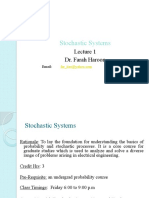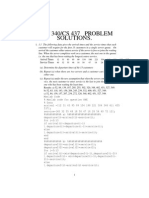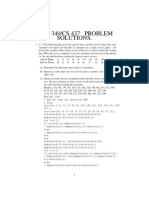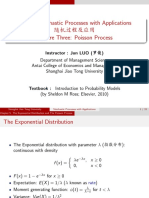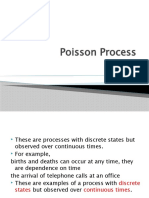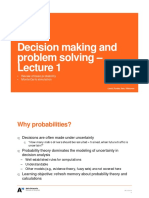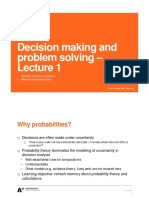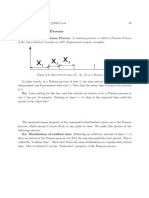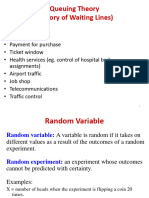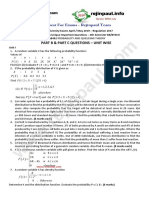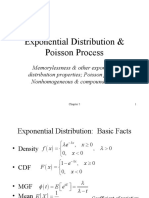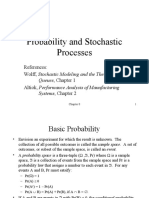0% found this document useful (0 votes)
28 views30 pagesProbabilistic Modelling - Part 2 - 2023
The document discusses the Poisson process, which models random events occurring continuously and independently over time. It defines the key properties of a Poisson process, including that the number of events in a given time period follows a Poisson distribution. It also covers how to analyze scenarios involving multiple independent Poisson processes and random arrival times.
Uploaded by
Mostafa SaneiiCopyright
© © All Rights Reserved
We take content rights seriously. If you suspect this is your content, claim it here.
Available Formats
Download as PDF, TXT or read online on Scribd
0% found this document useful (0 votes)
28 views30 pagesProbabilistic Modelling - Part 2 - 2023
The document discusses the Poisson process, which models random events occurring continuously and independently over time. It defines the key properties of a Poisson process, including that the number of events in a given time period follows a Poisson distribution. It also covers how to analyze scenarios involving multiple independent Poisson processes and random arrival times.
Uploaded by
Mostafa SaneiiCopyright
© © All Rights Reserved
We take content rights seriously. If you suspect this is your content, claim it here.
Available Formats
Download as PDF, TXT or read online on Scribd
/ 30



